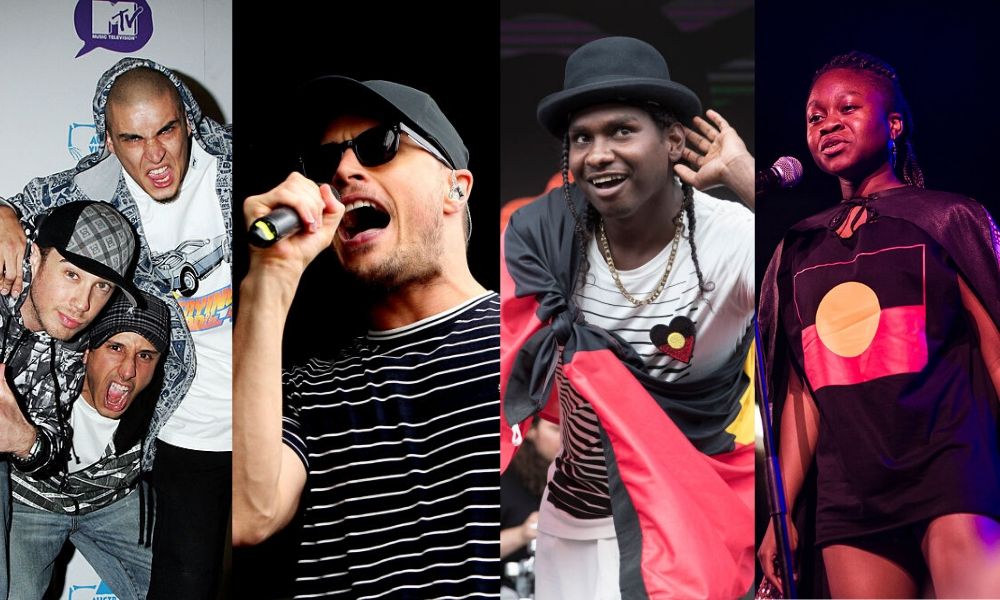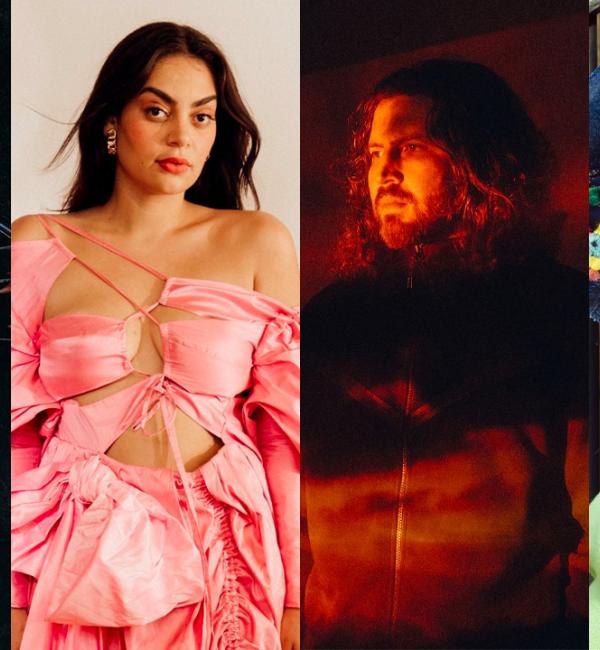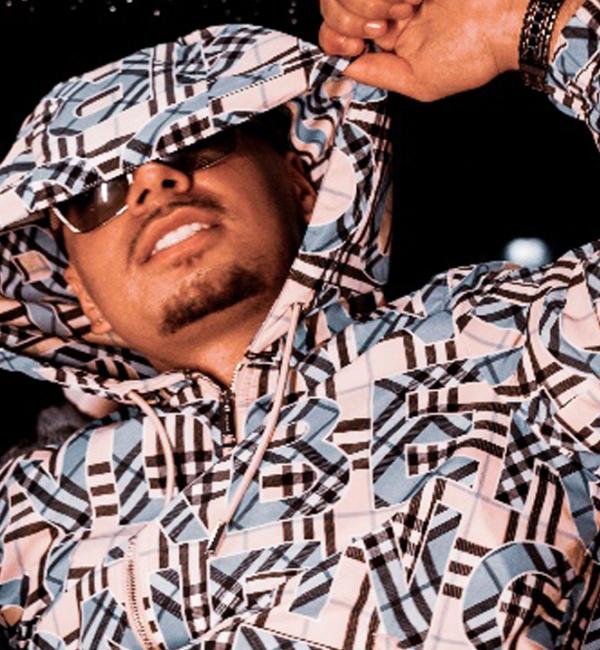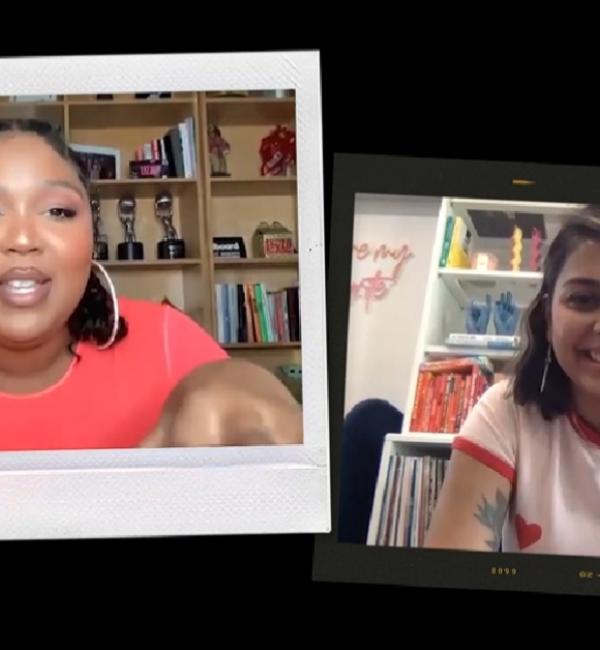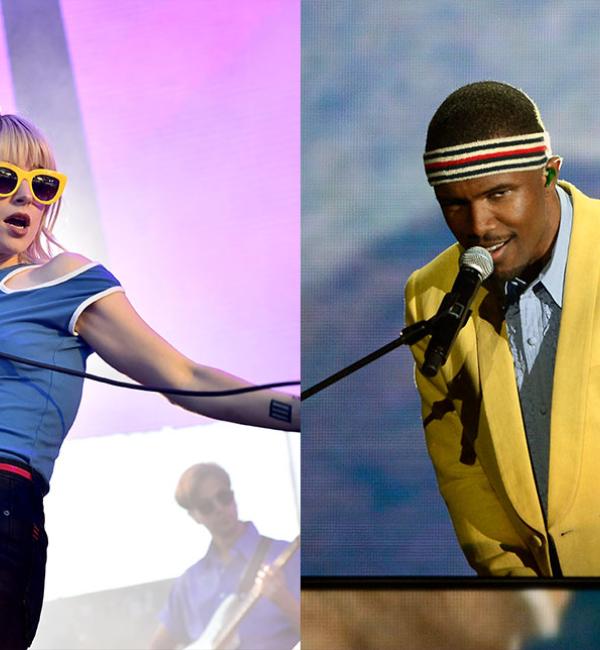
If you turned on the radio in the early aughts, it was likely you were listening to Australian hip-hop, namely what was affectionately referred to as Larrikin rap. Bliss ‘N’ Eso, Hilltop Hoods, 360 and Pez dominated these years with their shrill Aussie lilt that cut through resplendent melodies like a hot knife. It was the mark of what made Australian hip-hop decidedly local but despite its success, it failed to paint an all-encompassing picture of the multifaceted genre. Radio programming was dominated by these mainstream heavyweights, often drowning out the bubbling undercurrent of what would become the next generation of Indigenous, immigrant and POC hip-hop stars.
2009
In 2009, as Hilltop Hoods were collecting ARIA Awards and releasing their fifth studio album, State Of The Art, there was a young rapper finding his feet and becoming inspired to take on the future of Australian hip-hop.
At just 19, Briggs had performed alongside Reason, who was inspired by his effervescence. "I was pretty taken aback by this big fella with so much energy and so much passion standing up there, proud of his world of Shepp," Reason said, calling back to Brigg's hometown of Shepparton, Victoria. "[He was] rapping in a way that, you know, is so comparable to some of the greats, some of the more powerful MCs, you know, that I’ve followed over the years," he adds.
After becoming Reason's hype man, Briggs worked with Hilltop Hoods' MC Suffa who loaned the Indigenous rapper "a couple of grand" to release his first EP, Homemade Bombs in 2009. This would eventually lead to him joining the State Of The Art tour.
2010
Despite hip-hop beginning in New York, the genre is powerful enough to create tight-knit communities all over the world. Australia was no different. And in 2010, 360 started a Rapper Tag on YouTube, an online cypher where each rapper dropped a freestyle and tagged who they wanted to join in next. Its popularity was undeniable, with the likes of Urthboy, Briggs and MC Eso joining in, rapping passionately to the camera. Rapper Tag continued well into 2013.
"I think Rapper Tag is one of the most positive things to happen to the Australian hip-hop scene, period," 360 told Australian Hip Hop Directory. "It sounds kind of corny to describe it like this, but its sort of unified the scene and brought everyone together."
2011
In 2011, Kerser whose cited as one of the leading voices in gutter rap came to prominence. The release of his first album, The Nebulizer, coincided with his publicised rap battle with 360, where no winner was decided. This sparked a long running rivalry between the two rappers who would go on to release diss tracks, back and forth over the years. But Kerser's music was a far cry from the kind of hip-hop that enjoyed mainstream success in Australia. A tangle of synths, it epitomised pop, party hip-hop climbing the US charts, with a decidedly Aussie twist.
2012
As Briggs became a widely known name in hip-hop, he began to garner recognition, receiving two Deadly Awards nominations. The Yorta Yorta MC continued this momentum, releasing his single Rather Be Dead which was added to triple j and announced his second album, Sheplife, to be released in 2013.
2013
However, it was in 2013 that a shift in the genre began to occur. Urthboy penned an essay, Level Surface Or Surface Level, where he pinpointed the local genre's failings. "As a white rapper and label manager it’s been easy to fool myself into thinking that white privilege doesn’t exist," he wrote. "I consider myself uncompromisingly anti-racist but as a white male, I benefit from racism. Like some fucked up Steven Bradbury scenario where I stand to gain if sections of our society have their opportunities obstructed. Stop. Think about that." The thoughtful prose tackles racism, both inherent and overt, while questioning the lack of diversity in the scene. "Let’s cut to the chase – the majority of successful Australian hip hop artists share two features. We’re male and white," he concedes.
But it wasn't just the scene sanitising mainstream hip-hop of any diversity. Australian media has had issue with taking hip-hop seriously as a genre. It's often been parodied, mocked, and diminished into a thuggish lesser-than art form by comedians, radio stations and television show hosts. In 2011, Chris Lilley even donned blackface for his character S Mouse, who was supposed to be a Black rapper from California. He littered racial slurs, stereotypes, and Jim Crow-like imagery haphazardly in a feeble attempt at comedy. Without a doubt, this held many Black, POC, immigrant and low income rappers back from mainstream success.
However as the internet grew into a prominent place for rappers to discuss, release, and share each other's music, Soundcloud became a common meeting ground. Free from the red tape of music executives or the country's preconceived notions, the platform gave artists a new way to release music — minus the costs Briggs came up against with his first EP. The entry to barrier was simplified and this birthed a new era in Australian rap, including the likes of Tkay Maidza, Remi, Allday, L-FRESH The LION and M-Phazes building on that feeling of community 360 was so proud back in 2010 to ignite.
By the end of the year, The Guardian had released an article, proclaiming Melbourne rapper Illy to be "Australia's answer to Jay Z." His ARIA win that year, for Urban Album Of The Year signalled dominance in the hip-hop scene, as a burgeoning digital underground scene began to gain momentum.
2014
As a new guard of Australian hip-hop artists began to emerge the difference between old and new was clear. But then a blonde rapper from Mullumbimby, New South Wales broke through on the world stage. Iggy Azalea, who rapped with a unexplainable US Southern lilt, snagged a slew of #1s with the release of her pop-meet-hip-hop album, The New Classic. Her song Fancy featuring Charli XCX sat at the top of the Billboard Hot 100, while her collaboration with Ariana Grande, Problems, secured the #2 spot. She was the first person to take the top two spots since The Beatles in 1964.
The Guardian posed that while Azalea's success was undeniable, "her pop-raps [bore] zero resemblance to the type of music being made by Australian rappers in 2014. The local hip-hop scene is more exciting, exuberant and imaginative than it has ever been." It's true, the scene here was as exciting, experiencing a burst unlike anything else in the past 20 or so years. And it was on the precipice of changing.
2015
In pursuit of something more, Sampa Tembo better known as Sampa The Great moved to Australia on a whim, after her sister suggested it to her. The Zambian artist had dabbled in poetry slams during her time in the US but it wasn't until she settled in Sydney that she delivered her debut release, The Great Mixtape. "An instant classic reminiscent of Blu & Exile, Digable Planets, Lauryn Hill," one reviewer wrote, "but also with the influence of fellow Aussies Hiatus Kaiyote." It was difficult for many to describe what made Sampa The Great so indelibly magnetic: perhaps it was her sharp wordplay, or inimitable flow, but whatever it was, it got peoples' attention.
“I know that representation-wise, I’ve definitely added my stamp to the spectrum,” Sampa told the BBC. But she wants more for the hip-hop artists in her adopted home. “We don't want to just be seen or heard [but] we want to create avenues [to ensure] that this is not a trend for us.”
As Sampa's popularity grew, it opened the doors for other immigrant rappers, namely of African descent.
2016
The release of Tkay Maidza's eponymous debut album, Tkay, came off the back of a successful couple of years. Her single Switch Lanes was voted into triple j's Hottest 100 in 2014, while her single MOB secured a spot in the countdown again in 2015, making it her first song to be played on Australian commercial radio. Maidza's rise to success was swift, as the Adelaide star boasted collaborations with Bok Bok, SBTRKT, and features in Australian Vogue and lauded French publication, Konbini.
At the same time, Australian hip-hop veteran, M-Phazes received a Grammy award for his work on Eminem's Bad Guy, while Sikh rapper L-FRESH The LION, released his third album Become on Elefant Traks. But Australia's hip-hop scene was about to be obliterated by one its biggest voices, as Briggs joined forces with rapper Trials to form the duo, A.B. Original. Their record Reclaim Australia featured the likes of Thelma Plum, G. Yunupingu and Archie Roach. The duo's first single January 26 was a sharp, subversive commentary on the concept of Australia Day plunged the hip-hop stars right in the middle of a historical debate. Bubbling with magnificent, acerbic and unbridled fury, A.B. Original displayed the thesis of Australia's new guard of hip-hop artists: those who had been unseen by the mainstream were finally getting the chance to have their say.
2017
Once this momentum started, it was hard to stop. Lauded as the key players redefining the antipodean hip hop scene, artists like Manu Crooks, Jesswar, SophieGrophy, Triple One, B Wise, UV Boi, Dallas Woods, and P-Unique flooded the genre creating music that spanned stories of displacement, meditations on home as well as irreverent party trap.
There was also one new name making waves for his contagious joy, exuberant dancing, and refreshing embrace of language. Baker Boy performed in both English and Yol?u Matha and his single Cloud 9 and follow-up Marryuna caused a dizzying amount of excitement. “No one was rapping in language so I thought I’d try [to] make history to be the first,” he told SBS, “and it happened, which is crazy.”
2018
In 2018, Australian hip hop artists began to once again break into the global scene. Manu Crooks was handpicked to support A$AP Ferg on the Europe and Canadian legs of the rapper's tour, while Tkay Maidza's new singles featured Killer Mike and Duckwrth, as well as featuring on house producer, Martin Solveig's single, Do It Right. Kwame released his single WOW and covered Kendrick Lamar's Alright for triple j's Like a Version.
And as Australian rappers enjoyed their just deserts, other new names emerged like Miss Blanks, Kaiit and Carmouflage Rose.
Kaiit's debut record, Live From Her Room invited listeners to step in to her world. While the autobiographical album is predominantly R&B, it shifts and twists the genre with a deviously wry wink. Self-aware, subversive and alchemical, Kaiit is a bright star in the evolving Australian scene.
2019
Today, Australian hip-hop looks a lot different to what it did 10 years ago. Its evolution has been incredible, with trailblazing artists like Briggs, Sampa The Great, and newcomer Baker Boy leading the genre's future into greener pastures, while a new Australian drill genre has emerged, spearheaded by identities like OneFour, Hooligan Hefs and Triple One, even picking up overseas streaming success. An exciting decade of Australian hip-hop is coming.
